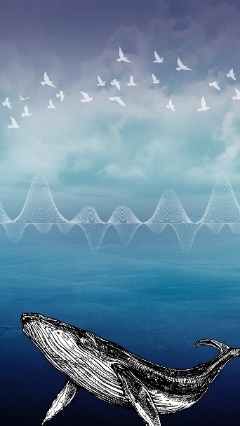
What is your favourite animal sound? Cast your vote in our national poll
Koo-koo-kaa-kaa, crawk, howl… nationwide project to proclaim Australia’s favourite call of the wild.
Media release: 31 July 2023
Media contacts: Laura Boland, laura@scienceinpublic.com.au or 0408 166 426; or Tanya Ha, tanya@scienceinpublic.com.au or 0404 083 863.
Full media kit: www.scienceinpublic.com.au/abc/
Participate at: www.abc.net.au/sounds from 31 July.
Do you love the summer night sounds of cicadas? Or the outback howl of dingoes? Are you intrigued by the lyrebird’s mimicry or the mating croaks of frisky frogs?
The search is on to find our most-loved Aussie animal sound. This National Science Week, ABC Science wants people to go online to eavesdrop on the animal kingdom, explore the wonder and science of bioacoustics, and vote for their favourite call of the wild.
“Bioacoustics – the study of the sounds of wildlife – is really important for science,” says ecologist and science communicator Dr Jen Martin.
“Animal sounds help us to find and identify different animals, particularly ones that are hard to spot. And understanding when and why animals call means we learn more about how they flirt, fight and otherwise communicate with each other.”
“Open your ears and minds to the sounds of nature,” says science legend Dr Karl Kruszelnicki. “We’d love people to take this opportunity to learn more about Australia’s unique wildlife and the curious noises they make, and select their three favourites.”
Twenty-eight different animal sounds have been long-listed by ABC’s resident nature-lovers in consultation with scientists so that people can get to know our local tweets, howls, bellows, barks, chirps, croaks and calls, and vote for their favourites.
Among the contenders are:
- the whipcrack followed by “choo-choo” of the whipbird (Psophodes olivaceus), an iconic sound of the bush in Australia’s eastern states
- the eery long, drawn-out call of the rotund, aptly-named moaning frog (Heleioporus eyrei)
- the grunts, snorts, growls and screams of the world's largest surviving carnivorous marsupial Tasmanian devil (Sarcophilus harrisii)
- the low rumbling gurgles and high-pitched whistles and squeals of the humpback whale (Megaptera novaeangliae).
For more about each animal and it’s call and to vote for your favourite, visit www.abc.net.au/sounds.
The poll opens on Monday 31 July. The list will be cut to 10 finalists on Friday 11 August, followed by a second round of voting – and the winner will be announced on Friday 18 August.
Australia’s Favourite Animal Sound is the online project for National Science Week 2023, undertaken by ABC Science with funding through the Australian Government’s Inspiring Australia strategy.
Selected audio available via www.scienceinpublic.com.au/abc. Talent available for interviews (see over).
Talent available for interviews

Dr Karl Kruszelnicki is a qualified scientist, doctor and engineer whose fun-loving personality led him to become a well-known author, science communicator and ABC regular. He is the Julius Sumner Miller Fellow at the University of Sydney.
Media contacts:
- Laura Boland, laura@scienceinpublic.com.au or 0408 166 426
- Tanya Ha, tanya@scienceinpublic.com.au or 0404 083 863.
Australia’s Favourite Animal Sound: the long list
Barking owl/Muurrguu (Ninox connivens): “woof woof”
Banjo frog (Limnodynastes species): “bonk bonk”
Boobook/Guurrguurr (Ninox boobook and Ninox leucopsis): “book book” or “mo-poke”
Black cockatoo (Zanda funerea): “kee-ow”
Bush stone-curlew (Burhinus grallarius): “weer-lo”
Butcherbird (Cracticus torquatus and Cracticus nigrogularis): melodic and maniacal
Cicadas (superfamily Cicadoidea): “screeeeee”
Dingo (Canis familiaris): “oh-ooll”
Fairywren (Malurus species): high tinkering trills
Flying fox (Pteropus species): squeeling, squabbling and cackling
Gang-gang cockatoo (Callocephalon fimbriatu): “creak creak”
Galah (Eolophus roseicapilla): “chi chi”
Green tree frog (Litoria caerulea): “crawk-crawk-crawk”
Humpback whale (Megaptera novaeangliae): squeals, whistles, rumbles
Koala (Phascolarctos cinereus): grunts and bellows
Koel (Eudynamys orientalis): “koo-el”
Kookaburra (Dacelo novaeguineae): “koo-koo-koo-koo-koo-kaa-kaa-kaa”
Lyre bird (Menura novaehollandiae): a famous mimic
Magpie (Gymnorhina tibicenhas): melodious carolling
Moaning frog (Heleioporus eyrei): “ooohhhugh”
Possum (brushtail) (Trichosurus vulpecula): grunts and screeches
Possum (ringtail) (Pseudocheirus peregrinus): squeeky chirrups
Raven (Corvus coronoides): “ah-ah-ah-aaaah”
Sugar glider (Petaurus breviceps): “yap, yap”
Sulphur-crested cockatoo (Cacatua galerita): “raa-aach”
Tasmanian devil (Sarcophilus harrisii): “raaaach”
Whipbird (Psophodes olivaceus): whipcrack followed by “choo-choo”
Yellow-bellied glider (Petaurus australi): shrieks and gurgles

